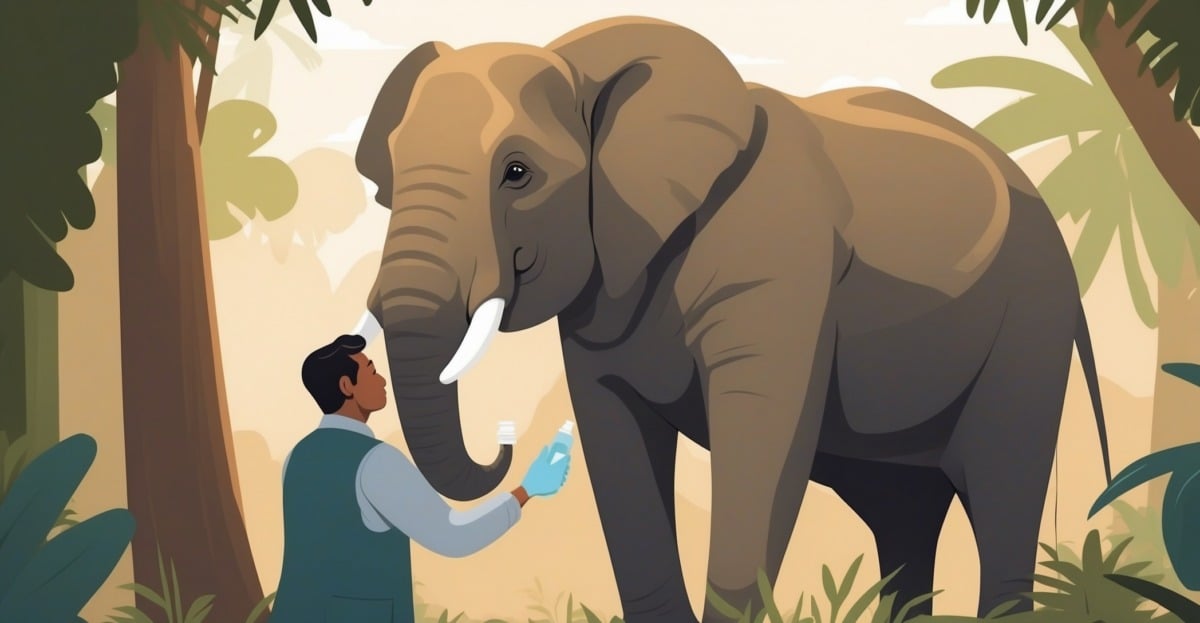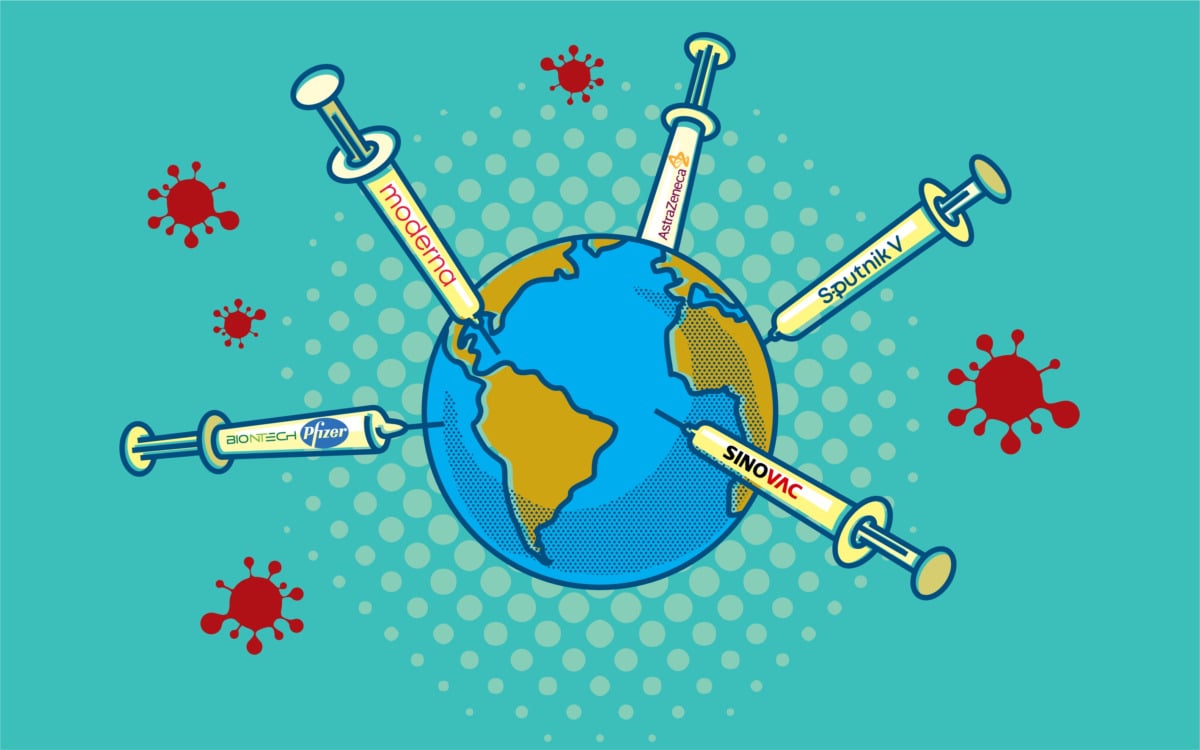A week ago, Dublin Zoo mourned the death of Zinda, the second elephant to die in their care in the space of a few days. Now, a third may also be fighting for her life. This is down to a deadly virus that afflicts Asian elephants, particularly calves. It is called Elephant endotheliotropic herpesvirus (EEHV) and is the number one killer for Asian elephant calves living under managed care in North America and Europe, with a mortality rate of up to 85%.
Now, biotechs are coming to the rescue and an mRNA vaccine could be the solution to save these elephants from the deadly virus.
What is EEHV and how does it affect elephants?
EEHV is essentially a type of herpesvirus that was discovered in 1990, before being formally characterized in 1999 by researchers at the Smithsonian Zoo in Washington DC, in the U.S., who linked 10 cases of a “highly fatal hemorrhagic disease” – characterized by damaged blood vessels, bleeding, and organ failure – in young Asian and African elephants in zoos. In each case, they discovered “ultrastructural evidence for herpesvirus-like particles in endothelial cells of the heart, liver, and tongue.”
Ben Lamm, chief executive officer (CEO) and co-founder of the de-extinction company Colossal Biosciences, explained in a comment to Labiotech: “EEHV…can cause a highly fatal hemorrhagic disease, primarily affecting young elephants. We know that EEHV is a latent virus which the majority of elephants naturally carry and shed on occasion. Calves appear to be most susceptible to EEHV disease after they have been weaned, at a time when they are not protected by their mother’s antibodies. Once the virus takes a hold, elephants quickly become critically ill, causing hemorrhagic disease.”
If severe enough, EEHV can result in death within 24 hours of infection. It has caused around half of the deaths of young Asian elephants in zoos over the last four decades. It has also been detected in sanctuaries and safari parks, as well as in wild elephant herds in nine countries, including India, Nepal, and Myanmar, which is particularly concerning due to the fact there are fewer than 50,000 Asian elephants left in the wild and they are listed as endangered species on the IUCN Red List.
World-first mRNA vaccine against EEHV in elephants
But it is not all doom and gloom. There is now newfound hope in fighting against EEHV in elephants. A few weeks ago, Houston Zoo announced that its 40-year-old Asian elephant, Tess, received the first-ever mRNA vaccination against EEHV. The vaccine aims to expose elephants to the viral proteins that enable the virus to enter the host’s cells. This exposure helps induce an immune response, blocking these processes and enabling elephants to control viral growth, preventing lethal disease.
According to a recent press release, extensive preclinical trials showed that the mRNA vaccine can induce antibodies without adverse effects. The vaccine was recently approved by multiple entities involved in overseeing the use of experimental products to be applied to elephants. Houston Zoo approved it for their managed community and, over the coming weeks, animal care experts and veterinary staff will monitor Tess to assess the mRNA vaccine’s effectiveness.
The result of a collaborative effort
This vaccine is the result of a collaboration between Dr. Paul Ling and his team of virologists at the Baylor College of Medicine, and Houston Zoo – a partnership that was initiated in 2009 after a beloved young elephant called Mac succumbed to infection from EEHV at Houston Zoo in 2008. Ling explained that Mac was one of several young Asian elephants born at Houston Zoo that died from EEHV. Several other zoos also reported lethal EEHV cases at the time and it was becoming increasingly recognized that the disease was a significant issue for Asian elephants around the world.
“At the time, just across the street from the Houston Zoo, my laboratory at Baylor College of Medicine was researching human herpesviruses (Epstein-Barr virus),” said Ling. “Due to my expertise with herpesviruses, I was contacted by the zoo on the chance that I might be able to do something more proactive against this devastating disease. I thought about it for a couple of days and came to the conclusion that ‘Who wouldn’t want to help save baby elephants?’ and I would try to find a way to do something about it.
“I envisioned a comprehensive research program I call, ‘Bench to Barn’, which had three phases: 1) diagnostics, 2) treatments, and 3) vaccine(s). The goal of the first two phases was to provide elephant keepers and veterinarians [with] better tools for diagnosing and managing EEHV-associated disease in the short term, while we worked on generating a vaccine. Through the partnership with the Houston Zoo, new tools were generated for detection of EEHV (qPCR tests), which were used to describe EEHV infection processes in more detail. For example, EEHV can commonly be detected in trunk secretions, which may be a major source for how the virus is spread between elephants.”
Ling said that a comprehensive protocol for detecting and managing EEHV disease was then developed by Houston Zoo from this new knowledge and is currently used, or has been adapted, by many other institutions that care for elephants. “The culmination of our partnership has been the generation of an mRNA vaccine against EEHV1A, which is the EEHV type most commonly associated with lethal infection.”
Colossal has also played a hugely important role in the development of this mRNA vaccine, contributing advanced technology tools, research support, and funding that helped accelerate its development and deployment. “Colossal’s early role using its proprietary artificial intelligence (AI) computational technologies for comparative genomics in elephants and the sequencing of the Asian elephant genome also provided additional important information to evaluate responses to the vaccine,” said Lamm.
Expanding the reach of the EEHV vaccine for elephants
If the mRNA vaccine proves to be successful in Tess, the zoo plans to vaccinate more elephants under its care. Then, following encouraging results from the initial vaccine trials, it will begin to be offered to more facilities, especially to those with vulnerable young elephants.
Ling commented: “There are a number of regulatory steps that vary between individual institutions and states in addition to federal regulations. We are currently working through these steps to expand vaccine distribution to several zoological institutions. We are particularly focused on evaluating the vaccine for its ability to stimulate protective immunity against EEHV and this may take several months or even a year or two.”
In the next three to five years, it is hoped that the vaccine will be applied to the broad population of elephants under human care all over the world. Following that, the team will look at applications of the mRNA vaccines with animals in the wild.
Ultimately, the mRNA vaccine is anticipated to have a significant impact on the global Asian elephant population and lay the foundational work for a similar vaccine for African elephants, too.
There is also the possibility that the vaccine could have applications in human medicine. In a statement to IFL Science, Colossal said: “…Success in immunizing against EEHV will further enable more focused efforts for vaccine development in other human herpesviruses (HHVs) that are also double-stranded DNA viruses, and more broadly to other viruses in the Herpesviridae family which does include HSVs.”
mRNA vaccines: a promising solution for other viruses affecting animals
The rapid deployment of the COVID-19 vaccine – and all the pipelines that enabled its record-breaking development – have significantly aided the efforts to develop the mRNA vaccine for EEHV.
And mRNA vaccines could be the solution to tackling other infectious diseases affecting animals as well. “Since the pandemic, mRNA vaccines have shown great potential. In addition, rapid advancements are being made to improve mRNA vaccine efficacy. I definitely see great promise for this new vaccine technology being applied to address infectious diseases in animals,” commented Ling.
For example, researchers at the Perelman School of Medicine at the University of Pennsylvania have recently developed an experimental mRNA vaccine against avian influenza virus H5N1. It was shown to be highly effective in preventing severe illness and death in preclinical models and could potentially help manage the outbreak of the H5N1 virus currently circulating in birds and cattle in the U.S., as well as prevent human infections with the virus.
Ultimately, if the mRNA vaccine against EEHV in elephants is found to be successful in the long term, not only does it mean that other young elephants might not meet the same fate as Dublin Zoo’s Avani and Zinda, but it could also offer hope to many more animals afflicted by deadly viruses.


New technologies related to mRNA vaccines:




















No Comments
Leave a comment Cancel